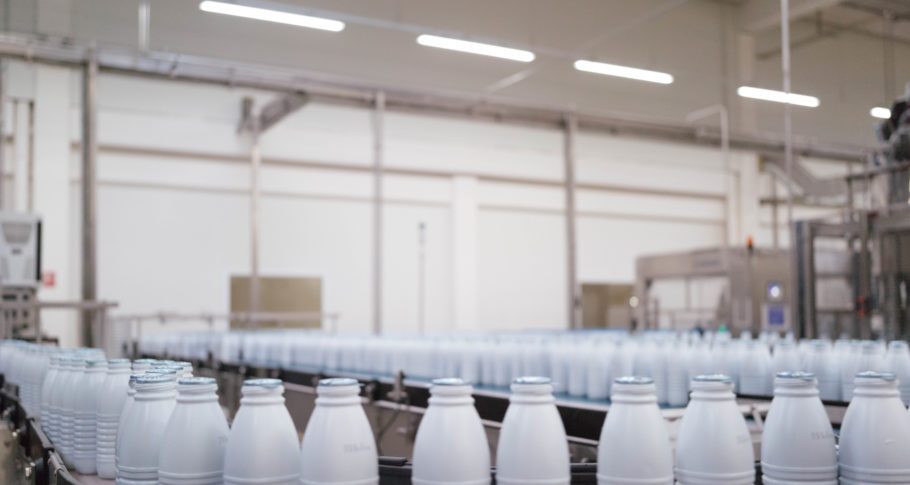Zéro
additives
Zéro
contaminants
1 glass of milk
150ml covers 20% of adult calcium requirements
1 out of 10 litres
collected in France becomes drinking milk
The manufacture of UHT (long-life) drinking milk
he cold chain is respected from farm to factory. On arrival at the factory, the raw milk is stored in refrigerated tanks. Before being treated, it goes through different stages.
- Pasteurisation: Destroys undesirable microorganisms by applying a temperature of 72°C for 15 seconds in a pasteuriser.
- Skimming: in order to offer consumers milk with different fat content*, the milk is skimmed. The skimmer separates the cream from the milk via a centrifuge.
- Homogenisation: Cream, being lighter than milk, tends to rise naturally to the surface. The homogenisation of the milk prevents this separation. The process consists of modifying the fat globules into small droplets in a pressure homogeniser. In this way, the fat is evenly distributed in the milk.
- Ultra High Temperature (UHT) sterilisation: the milk is heated for a few seconds to 140°C so as not to affect the nature of its components. The aim of this operation is to destroy all micro-organisms, and it is carried out using a steriliser.
Not everything can be called milk
The term “milk” is reserved exclusively for “the product of breast secretion, obtained through one or more milkings, with no addition or subtraction”. In other words, only milk from an animal can claim to be called “milk”. However, there are two exceptions for France, due to traditional use: almond milk and coconut milk. We cannot therefore say “soy milk” but soy juice or soy drink. These vegetable juices do not naturally contain calcium.
Milk: a variety of products
- Raw milk: Subject to strict controls, milk from milking is packaged directly on the farm and then placed in the refrigerated department of the store. You can recognise it by its yellow cap. Raw milk can be kept for a maximum of 72 hours in a cool place at 4°C after bottling.
- Pasteurised milk: Milk is heated to 72°C for 15 seconds to eliminate unwanted microorganisms. It can be full cream or semi-skimmed and can be stored at 4°C. Pasteurised milk is also available in the refrigerated section of food stores and can be stored for about 15 days.
- Microfiltered milk: This is a preservation technique that consists of removing microorganisms from the milk through a filtration membrane designed to retain microorganisms. The milk is kept cold at 4°, about 15 days before opening.
- Lactose-free milk: Milk naturally contains a sugar: lactose. The lactose of lactose-free milk has been transformed by adding lactase. This enzyme transforms lactose into galactose and glucose.
- Different varieties of UHT milk contain milk flavoured with chocolate, strawberry or vanilla, milk enriched with vitamins, trace elements, iron or omega 3. In addition to UHT cow’s milk, there is also UHT goat’s and sheep’s milk.
- Powdered milk: Powdered milk is dehydrated milk. The milk powder is obtained by concentrating and evaporating the water. 95% of the water is eliminated. The advantage of milk powder is that it can be stored for several months in a dry and cool place and can be transported to any part of the world. Powdered milk can be full-cream, semi-skimmed or skimmed.
- Condensed milk: Condensed milk is milk from which 60% of the water has been evaporated.
*Full-cream milk: 3.5% fat; semi-skimmed: between 1.5% and 1.8% fat; and skimmed: <0.5% fat.

